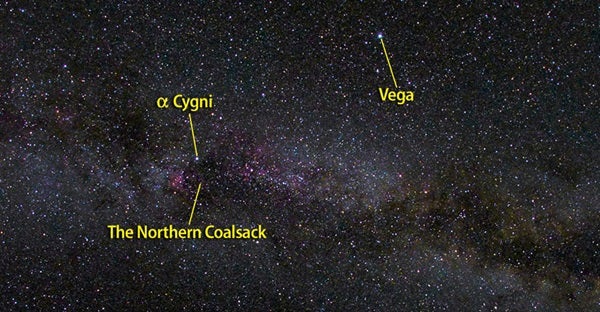Conflicting coalsacks
Admittedly, I too was once confused over the nebula’s whereabouts. The first star chart I saw it on as a child depicted the Northern Coalsack as a tiny “hole” in the Milky Way, a few degrees west-northwest of Deneb (Alpha [α] Cygni); I never did see that one. Many years later, to my chagrin, someone told me that must have been a mistake because the Northern Coalsack is a 5°-wide hole in the Milky Way north-northeast of Deneb, close to the Cepheus border. And, yes, I could definitely see that void under a dark sky with my unaided eye.
Pin the tail
Generally, all of these objects are “coalsacks.” Brave mariners sailing the southern seas centuries ago applied that name to any dark vacancy in the Milky Way they saw with their naked eye. Italian historian Peter Martyr d’Anghiera (1457–1526) first formally described the dark void near the Southern Cross as a coalsack. But what about the Northern Coalsack?
But where in the Swan did Swithin see it?
Garrett P. Serviss told us clearly in his 1888 Astronomy with an Opera-Glass: “Between the stars α, γ, ε,” he explained, “is the strange dark gap in the galaxy called the Coal-Sack, a sort of hole in the starry heavens.” Richard Hinckley Allen confirmed this position in his 1899 Star-Names and Their Meanings; he then went on to formally call this “almost vacant space” the “Northern Coal-sack.”
Alas, Serviss muddied the waters a little in his 1910 book, Round the Year with the Stars, when he said, “Around and above the head of the cross there are dark spaces, which are specially impressive when the eyes are partly averted from them.”
As always, send your thoughts and comments to someara@interpac.net.












